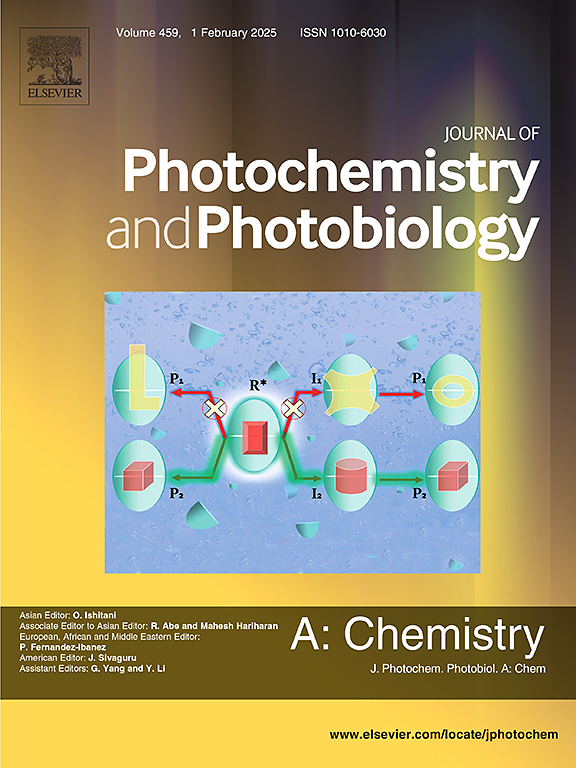Stacking machine learning models for predicting photophysical properties of iridium complexes
IF 4.1
3区 化学
Q2 CHEMISTRY, PHYSICAL
Journal of Photochemistry and Photobiology A-chemistry
Pub Date : 2025-03-14
DOI:10.1016/j.jphotochem.2025.116374
引用次数: 0
Abstract
Iridium complexes have played a key role in organic emitting diodes (OLEDs) devices as emitter for its high efficiency, appropriate solubility, and availability for emission color tuning. Although several progress has been made by using machine learning (ML) in designing new materials for OLEDs, there is still much room for enhancing the capability, transferability, and usability of machine learning. In the present work, we construct stacking ML models for predicting emission properties of iridium complexes, and multi-task for absorption wavelength prediction. Compared with the existing ML models, we propose an exhaustive feature generation process for iridium complexes, in which the original features of ligands of each complex are combined together according to the order of electronic structure properties. Then we build a series of meta learners in order to improve the accuracy in the emission task and to transfer ML models for predicting other photophysical properties such as the absorption wavelength. The influence of different feature selection methods and different machine learning algorithms on the performance of ML prediction is discussed in detail. We suggest concatenating the Morgan fingerprints of ligands according to a sorted order of electronic structure properties of isolated ligands as a simple and robust way to generate the input feature of complexes. The electronic structure calculations on isolated ligands can be replaced by ML, which further improves computational efficiency of the whole procedure. Promotion from base to meta learners and the advantage of gradient boosting algorithms can be observed in most tasks.

求助全文
约1分钟内获得全文
求助全文
来源期刊
CiteScore
7.90
自引率
7.00%
发文量
580
审稿时长
48 days
期刊介绍:
JPPA publishes the results of fundamental studies on all aspects of chemical phenomena induced by interactions between light and molecules/matter of all kinds.
All systems capable of being described at the molecular or integrated multimolecular level are appropriate for the journal. This includes all molecular chemical species as well as biomolecular, supramolecular, polymer and other macromolecular systems, as well as solid state photochemistry. In addition, the journal publishes studies of semiconductor and other photoactive organic and inorganic materials, photocatalysis (organic, inorganic, supramolecular and superconductor).
The scope includes condensed and gas phase photochemistry, as well as synchrotron radiation chemistry. A broad range of processes and techniques in photochemistry are covered such as light induced energy, electron and proton transfer; nonlinear photochemical behavior; mechanistic investigation of photochemical reactions and identification of the products of photochemical reactions; quantum yield determinations and measurements of rate constants for primary and secondary photochemical processes; steady-state and time-resolved emission, ultrafast spectroscopic methods, single molecule spectroscopy, time resolved X-ray diffraction, luminescence microscopy, and scattering spectroscopy applied to photochemistry. Papers in emerging and applied areas such as luminescent sensors, electroluminescence, solar energy conversion, atmospheric photochemistry, environmental remediation, and related photocatalytic chemistry are also welcome.

 求助内容:
求助内容: 应助结果提醒方式:
应助结果提醒方式:


